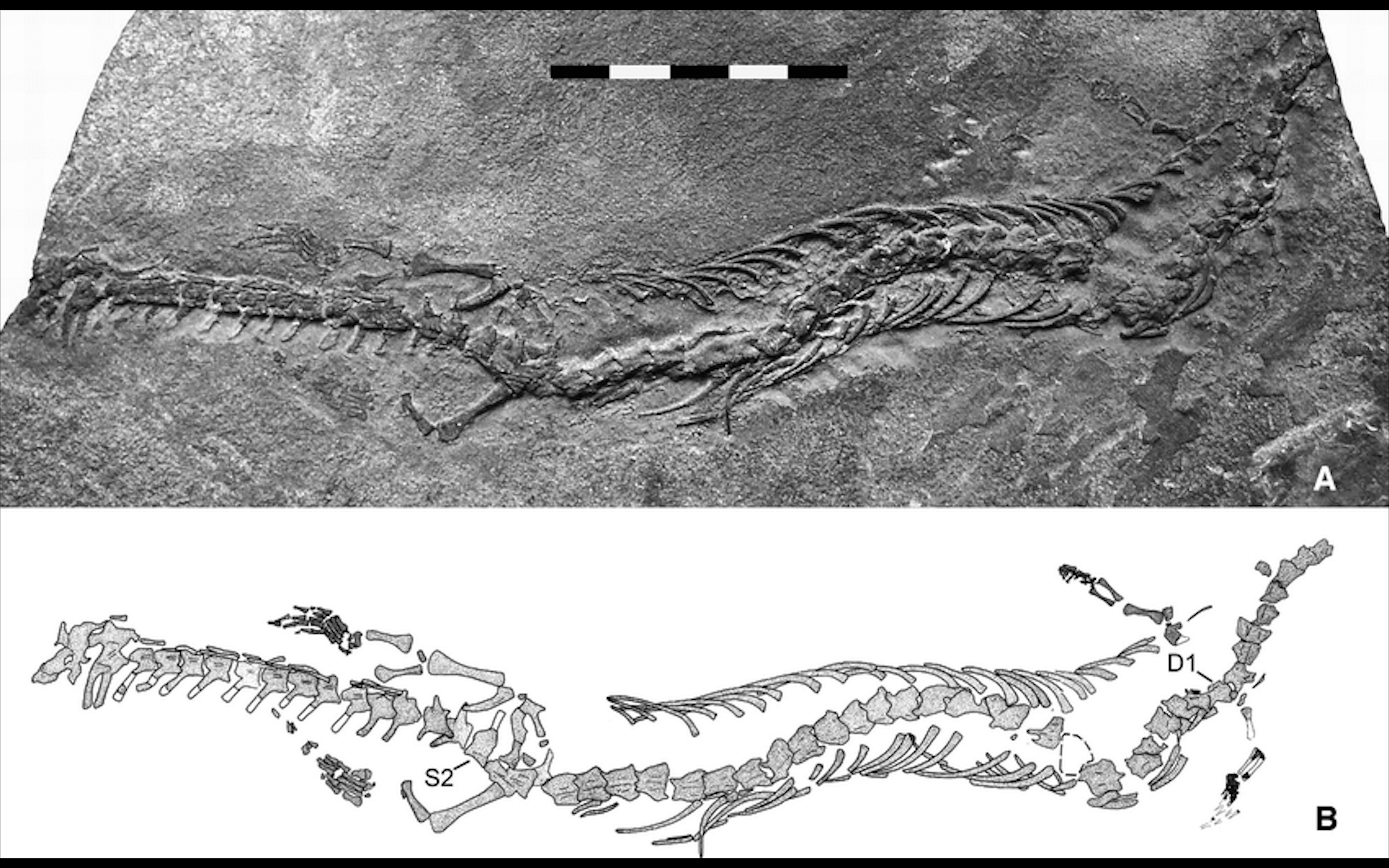Welcome to Acteosaurus

Name Definition
Actaeon lizard (Actaeon was a famous hero in Greek mythology that lived in the Greek city of Thebes)
Name Given By
Hermann von Meyer in 1860/A. tommasinii ; Calligaris in 1993/?A. crassicostatus
Location
Komen, Slovenia
Classification
Reptilia, Squamata, Toxicofera, Ophidiomorpha, Dolichosauridae
Size
unavailable
Temporal Range
Cenomanian - Turonian of the Late Cretaceous, approximately 99.6 - 89.3 million years ago
Ecological niche
aquatic predator
Species/Sub Species
A. tommasinii (type species), ?A. crassicostatus (possibly a synonym to Adriosaurus suessi)
Diet
even though its skull is currently unknown, Acteosaurus may have been a predator of small fish and other smaller aquatic vertebrates/invertebrates
Introduction
Acteosaurus is a genus of aquatic lizards that lived in Slovenia, central Europe during the Late Cretaceous. Acteosaurus was named after the famous Theban hero Actaeon in Greek mythology that was hunted down and killed by the goddess Artemis, who is the goddess of hunt, wilderness, wild animals, the Moon, and punishment. The type species A. tommasinii honors Muzio Giuseppe Spirito de Tommasini who was the magistrate of Italian city Trieste.
In 2010, a redescription of the clade Ophidiomorpha found it was monophyletic (monophyletic clades contain all the descendants and only one common ancestor), which includes the dolichosaurids such as the pythonomorph Pontosaurus, the varanoid lizard Aphanizocnemus, and the ancestral squamate Adriosaurus. Along with Adriosaurus, Acteosaurus was also found to have been a basal ophidiomorph and is the sister taxon to the clade Ophidia which contains all extant snakes today and all reptiles more closely related to snakes than to other lizards.
Acteosaurus is described as a relatively long squamate which was a common feature in other dolichosaurids and was in the Dolichosauridae. Some features that distinguish it from other dolichosaurids are the relatively short forelimbs as well as the long tail and the varanid-like vertebral column. The holotype consists of roughly 10 cervical vertebrae and 27 dorsal vertebrae, because Meyer was unable to give an exact number of how many vertebrae were in the holotype, though these are at least how much of each vertebrae there are. Unfortunately, the holotype did not come with a skull, so we can only guess as to what Acteosaurus ate and its skull morphology. While it is seen in most aquatic animals to help with buoyancy , there is no pachyostosis in the vertebrae or ribs of Acteosaurus. The limbs are reduced, and the fully developed forelimbs are shorter than the hindlimbs. Acteosaurus also has a flattened pelvic bone with a square-shaped pubis.
Both species of Acteosaurus were found in Cenomanian limestone in Komen, Slovenia. Komen is part of Istria which is the largest peninsula in the Adriatic sea in southern Europe and is also a part of the Karst Plateau. During the Late Cretaceous, Europe was split into an island chain in the Tethys ocean on the Eastern hemisphere of the world. Because of Acteosaurus’ aquatic nature as well as its anatomical resemblance to mosasauroids suggest that they would have lived at least on one of the coasts of these islands.